19th Century |
| Pre-History | 16th-18th Centuries | 19th Century | 20th Century | 21th Century |
| Visit the main River Returns web site >> |
| |

|
1816
First Ferry Across the St. Johns
Settler Lewis Z. Hogans married a Spanish widow who held a grant of 200 acres on what is now the site of the city of Jacksonville. He built an inn and from this site operated the first ferry across the St. Johns River.
|
|

|
1821
U.S. Buys Florida From Spain
In response to Seminole Indian attacks across the border with Georgia, and his dislike for the Spanish, Andrew Jackson used ambiguously worded orders from President Monroe to lead military incursions into the Spanish territory of Florida. Rather than loose the territory militarily, Spain sold the Florida lands to the U.S. for $5 million dollars. A treaty entered into force in 1821 and Andrew Jackson became the military-governor of Florida.
|
|
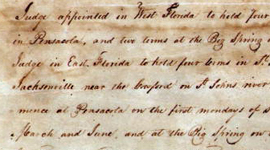
© Florida Memory Project
|
1822
Cow's Crossing Becomes Jacksonville
The narrow spot along the St. Johns River that the Timucuan Indians called "Wacca Pilatka", or cow's crossing, was renamed "Cowford" by the English settlers. The earliest use of the name "Jacksonville" occurred in an 1822 petition to the U.S. Secretary of State.
|
|
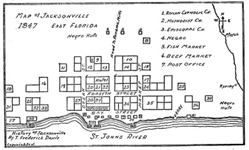
© History of Jacksonville, Florida, and vicinity, 1513 to 1924 / Florida Heritage Collection
|
1832
The City of Jacksonville is Incorporated
The Florida Legislative Council approved a charter forming a town government and the city of Jacksonville became incorporated.
|
|
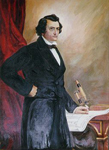
© John Gorrie State Museum
|
1842
John Gorrie, the Father of Refrigeration
John Gorrie, a Florida doctor fighting malaria and yellow fever, observed that '"nature would terminate the fevers by changing the seasons." He began sealing and then cooling rooms by suspending tubs of ice from the ceiling. His invention for making ice led to the first patent for mechanical refrigeration, paving the way for Floridians to live in air-conditioned comfort.
|
|
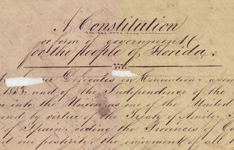
© Florida Memory Project
|
1845
Florida Becomes the 27th State
More than 325 years after the discovery of the St. Johns by Europeans, its settlers became full-fledged citizens of the United States when Florida became the 27th state.
|
|
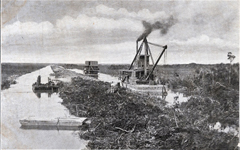
© Florida Memory Project
|
1855
Changes to the Landscape Begin
The State legislature passed the Internal Improvement Act, which offered cheap or free land to investors, particularly those interested in transportation. The Act set into motion the building of railways and the draining of wetlands for conversion to farmland.
|
|
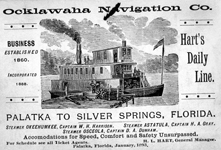
© Florida Memory Project
|
1860s
The Steamboat Era Begins
Steamboats appeared on the St. Johns for the first time. During the next several decades, the St. Johns River became Florida's first major tourist attraction vacationing Northerners. By 1890, the riverside town of Palatka had eight first-class hotels. The river also became the State's first "highway", enabling homesteaders to move into the central part of the State.
|
|
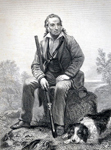
|
1867
Audubon Explores the St. Johns
Naturalist John James Audubon explored the St. Johns River and was decidedly less smitten with it than the Bartrams were. In a letter to his wife he wrote, "My account of what I have or shall see of the Floridas will be far, very far from corroborating the flowery sayings of Mr. Bartram, the botanist."
|
|
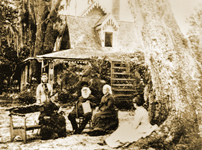
© Florida Memory Project
|
1873
Harriet Beecher Stowe Promotes Florida
"Hawthorne ought to have lived in an orange grove in Florida," wrote abolitionist and writer Harriet Beecher Stowe from her winter home on a 30-acre citrus grove along the river in Mandarin. Her collection of essays, Palmetto Leaves, promoted life on the St. Johns and was probably the first piece of promotional literature written about Florida.
|
|
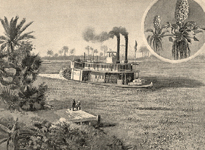
© Center for Aquatic & Invasive Plants, Univ. of Florida
|
1884
Mrs. Fuller Unleashes the "Lovely Plague"
Mrs. W.F. Fuller brought water hyacinths from the New Orleans Cotton Exposition to her riverside home where they quickly overran her garden pond. She tossed excess plants into the river and within a decade the hyacinth became a "lovely plague" of purple-blossomed floating mats impeding navigation on the river. To this day, Florida continues to spend $11 million each year to control this invasive species.
|
|
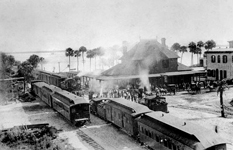
© Florida Memory Project
|
1886
Rail Service Reaches Central Florida
Rail service was completed between Jacksonville and the central Florida town of Sanford, on Lake Monroe. Although steamboat travel was just reaching a pinnacle of popularity, with seventy-four vessels running out of Jacksonville, the penetration of railroads into central Florida spelled the beginning of the end for the steamboat era.
|
|
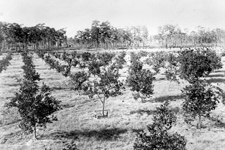
© Florida Memory Project
|
1870s
The Citrus Industry Grows, Prospers
Orange groves flourished along the river along with cattle, corn, cotton, tobacco, and peanuts. From 1870 to 1894 the citrus industry grew and prospered, with the first commercial packing house built near the St. Johns in Crescent City. Sanford was nicknamed "Celery City," and train travelers were offered celery stalks as they disembarked.
|
|
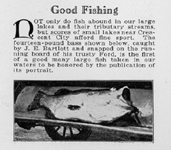
© Crescent City Chamber of Commerce / Florida Heritage Collection
|
1880s
Crescent City: Bass Capital of the World
Artificial ice - as opposed to natural ice being shipped in from New England to Palatka - was made in a factory on the shore of Lake Crescent, opening the door for commercial fishing and establishing Crescent City as "The Bass Capital of the World."
|
|
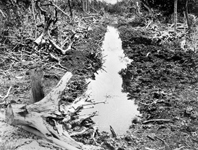
© Florida Memory Project
|
Late 1880s
Florida Battles Malaria, Yellow Fever
Mosquito-borne diseases such as malaria and yellow fever reached epidemic proportions in Florida. In 1888, 40 percent of Jacksonville's population fled due to a yellow fever outbreak. The State was forced to take action toward eradicating mosquitoes to help restore tourism and the growing population. Efforts included digging or blasting hundreds of miles of drainage ditches through wetlands.
|
|
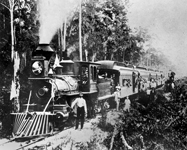
© Florida Memory Project
|
1890
Flagler Boosts Florida's Tourism Industry
Railroad baron Henry Flagler, owner of the Florida East Coast Railway, built an all steel bridge across the St. Johns, creating the final link that brought Northern tourists by rail to the luxurious Flagler-built hotels in St. Augustine. To feed the hotel's guests as well as a growing population, Flagler's Model Land Company developed Florida's agricultural industry. Today, tourism and agriculture remain two of Florida's major industries.
|
|
















